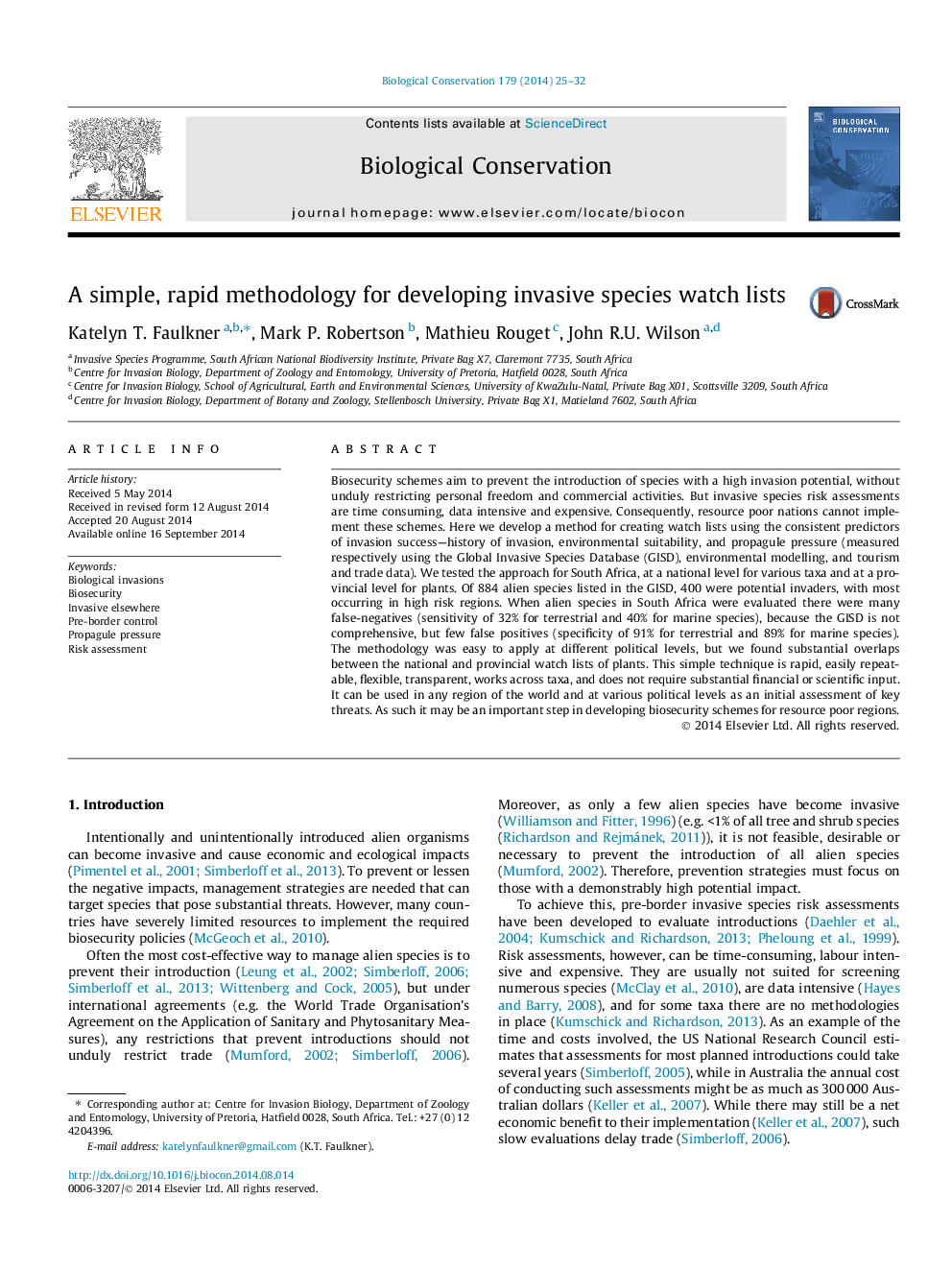| کد مقاله | کد نشریه | سال انتشار | مقاله انگلیسی | نسخه تمام متن |
|---|---|---|---|---|
| 6299939 | 1617922 | 2014 | 8 صفحه PDF | دانلود رایگان |
- We present a methodology to create a watch list of invasive species.
- The technique is simple, rapid, inexpensive and can be used for various taxa.
- Using the technique 400 potential future invaders for South Africa were identified.
- The method has a low sensitivity (due to data source quality) but high specificity.
- This watch list methodology may be particularly useful in resource poor regions.
Biosecurity schemes aim to prevent the introduction of species with a high invasion potential, without unduly restricting personal freedom and commercial activities. But invasive species risk assessments are time consuming, data intensive and expensive. Consequently, resource poor nations cannot implement these schemes. Here we develop a method for creating watch lists using the consistent predictors of invasion success-history of invasion, environmental suitability, and propagule pressure (measured respectively using the Global Invasive Species Database (GISD), environmental modelling, and tourism and trade data). We tested the approach for South Africa, at a national level for various taxa and at a provincial level for plants. Of 884 alien species listed in the GISD, 400 were potential invaders, with most occurring in high risk regions. When alien species in South Africa were evaluated there were many false-negatives (sensitivity of 32% for terrestrial and 40% for marine species), because the GISD is not comprehensive, but few false positives (specificity of 91% for terrestrial and 89% for marine species). The methodology was easy to apply at different political levels, but we found substantial overlaps between the national and provincial watch lists of plants. This simple technique is rapid, easily repeatable, flexible, transparent, works across taxa, and does not require substantial financial or scientific input. It can be used in any region of the world and at various political levels as an initial assessment of key threats. As such it may be an important step in developing biosecurity schemes for resource poor regions.
Journal: Biological Conservation - Volume 179, November 2014, Pages 25-32
